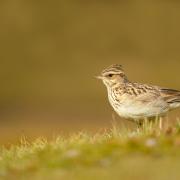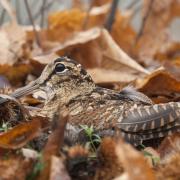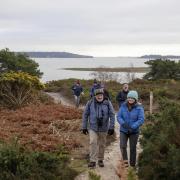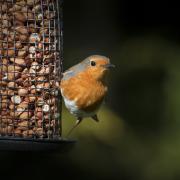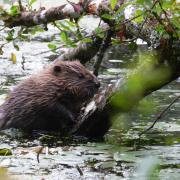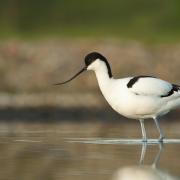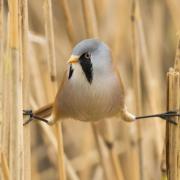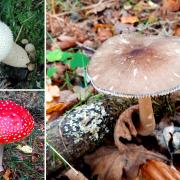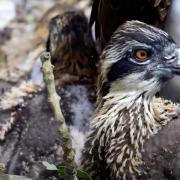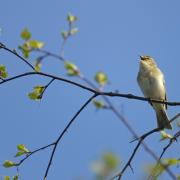During the past 40 years, the bushy-tailed red squirrels on Furzey have observed many visitors and curious sights. Jan Seymour relates their story and the intriguing history of this unique island
In recent years we have become more aware that many of our traditional wildlife species are under threat and facing a bleak outlook unless we act to relieve their problems, problems primarily created by us. The RSPB report that the kestrel population is declining at an alarming rate; also our honeybees, who tirelessly harvest the flower pollen, are facing a serious threat to their future.
But it's not all bad news for the colony of red squirrels on Furzey Island, which is descended from a single pair artificially introduced to the island 40 years ago. The current size of the colony is difficult to estimate precisely as these nimble creatures are not in the habit of standing still to be counted! Various surveys would suggest a fluctuating population of between 25-50 squirrels, dependent on the harvest from the Scots Pine and the toll of natural causes.
The colony is one of only four in the South of England with a thriving red squirrel population - Brownsea Island, Green Island and the Isle of Wight are the others. The red squirrel population declined in Britain following the introduction of the grey squirrel 100 years ago, but on the Continent it continues to be the predominant type of squirrel.
The agile red squirrel is a superb tree climber; its sharp, curved claws grip the bark even as it descends a tree trunk head first, and the foxy-red bushy tail adds stability when jumping through the branches, and to a lesser extent acts as a brake in emergencies.
Furzey provides a varied diet of seeds, nuts, berries, fungi, bark, buds, shoots and insects for the colony. Red squirrels have an excellent sense of smell to locate food they have stored during the previous autumn. In the winter period they develop characteristic ear tufts which are lost in the spring moult. One of their delightful habits is the loud 'chuck-chuck' noise they utter when alarmed. There must have been a chorus of 'chuck-chuck' when Newton Mason purchased the island and kept two wallabies on it. These unusual creatures from down under must have created quite a stir of curiosity with the resident squirrels.
Early habitation of the island was confirmed when a Stone Age axe was found on the beach, and wine vessels from the 1st century BC showed that Furzey islanders were then trading with Romans who were visiting nearby Hamworthy.
Shortly after the First World War, Lady Marghereta, who was then resident on Brownsea, rented Furzey. Local man Harry Dean was appointed as boatman and caretaker.
The principal house on the island was erected in 1936 of a solid construction with elevations of Purbeck stone under tiled roofs and unusual bronze metal-frame windows. The property is sheltered from the prevailing winds by high ground and dense Scots Pines; at this time a 220-foot private pier was added to combat the tidal rise and fall. Eleven years later, Algy Cluff, millionaire tycoon and oil magnet, bought Furzey Island for over �500,000 for the 31-acre site. At the time he was unaware that underneath Poole Harbour and bay were three separate oil reservoirs which would lay dormant for several years.
In November 1984 the unthinkable happened; BP submitted a planning application to Purbeck District and Dorset County Councils to carry out appraisal drilling on Furzey Island, which would only take just five acres of the 31-acre site - how could this be possible? Furzey lies within the Dorset Heritage Coast! Tourism around Poole Harbour is a major provider of income to the area and BP was obliged to demonstrate that there would be no adverse effects on the amenity use of the area during any of the development phases. The area is one of the most environmentally sensitive areas of the UK. As a result of the area's ecological importance, BP vigorously applied its environmental protection policy, and a monitoring programme covering the red squirrel colony on Furzey was instituted to determine how to develop the oilfield and to provide baseline data against which the oil company could monitor its performance.
In April 1985 the application was approved and the red squirrels of Furzey adjusted to their new neighbour. Across the harbour at the Wytch Farm development, BP won The Queen's Award for Environmental Achievement 1995 in acknowledgement of the innovative, technologically challenging and environmentally beneficial manner in which the site had been developed. In recent years, BP has been foremost in significant advances in drilling techniques which were applied to run a pipeline 30 feet under the harbour bottom from Furzey Island to Cleavel Point.
Twenty years on, it would appear that the oil giant has fulfilled its commitment to protect the environment and wildlife, besides extracting the crude oil and liquid petroleum gases from the reservoirs beneath the harbour. In the not-too-distant future, the oilmen will leave Furzey Island and return it to its original natural habitat.
Maybe, just maybe, the board of BP will consider donating Furzey Island to the National Trust who could transform the house into an environmental study centre. Wouldn't that be a grand gesture? In the meantime, the deer, golden pheasant and the colony of red squirrels will just have to wait for their new landlord to arrive... 'chuck-chuck'.
What do you consider should be the future for Furzey Island and its colony of red squirrels? Let us know on our forum at www.dorsetmagazine.co.uk







